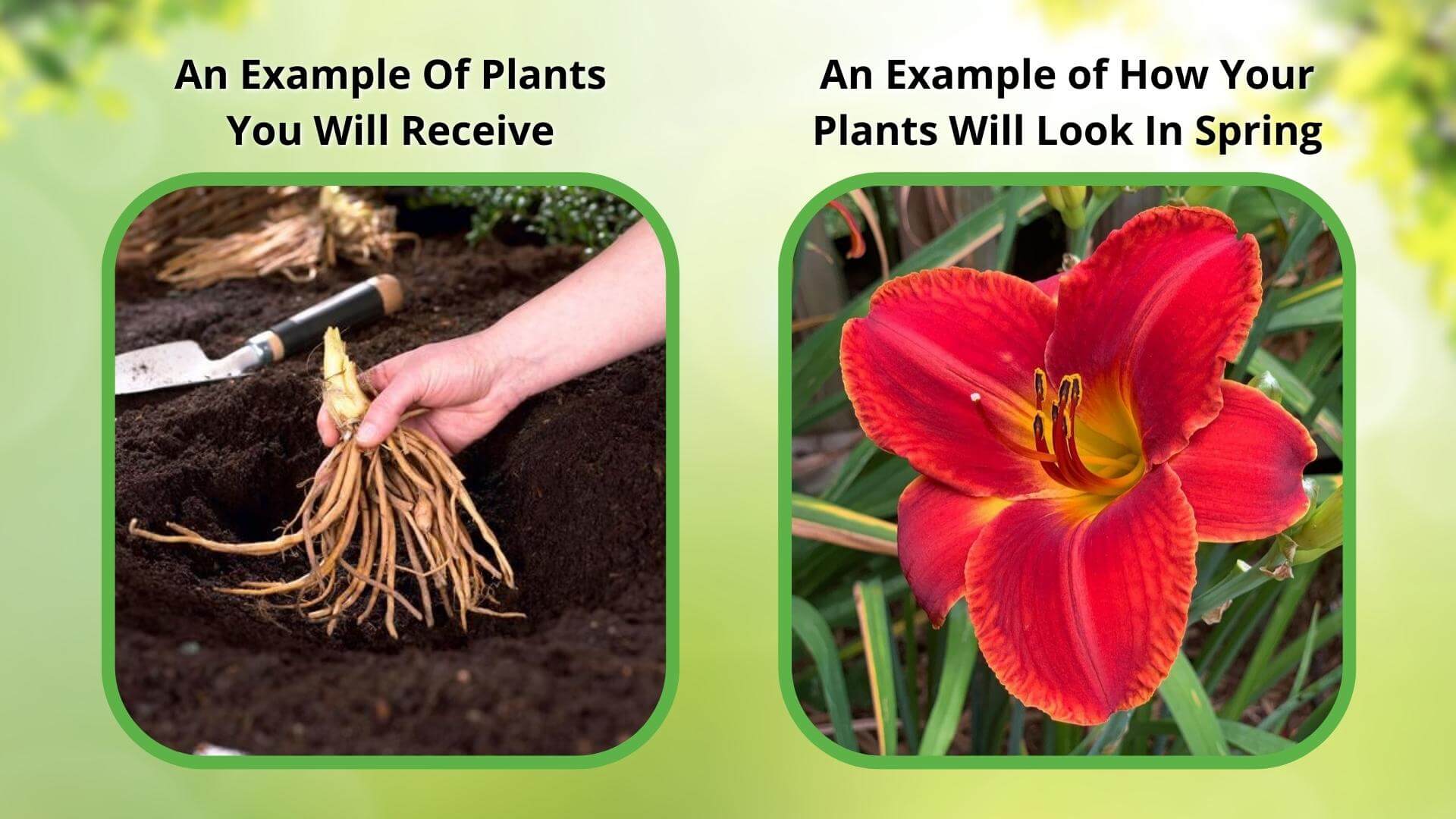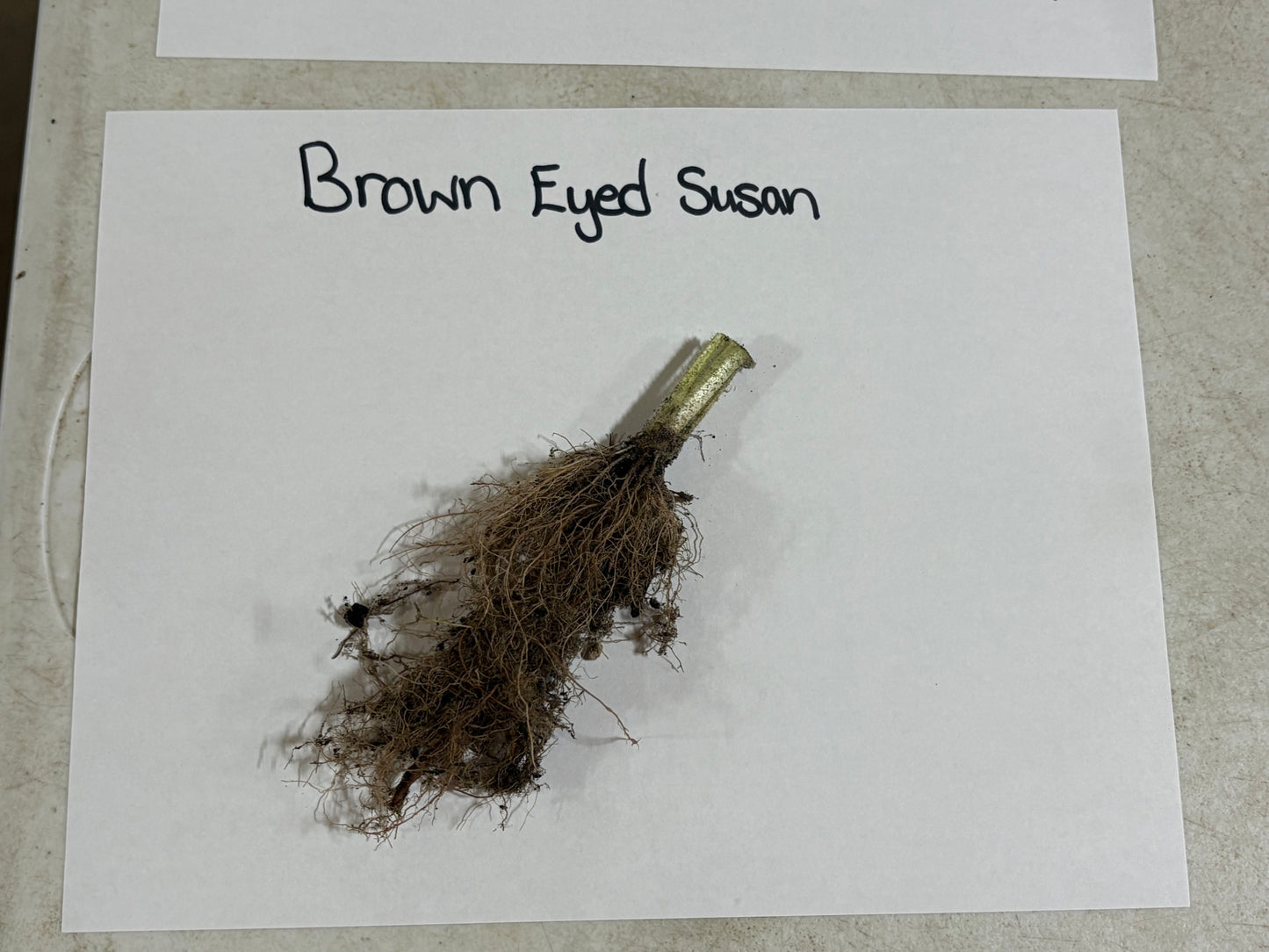Couldn't load pickup availability
🌸When you add 1 plant to cart, it automatically adds the free one
Brown Eyed Susan Plants | Rudbeckia Triloba
The Brown Eyed Susan is a lush, bush-like plant that give gardens beautiful greenery until finally flowering in its second year. Once established, it is a resilient, self seeding plant that takes hold for good in almost any climate.
Its blossoms are a striking flower, characterized by their deep brown center and stunning golden petals. A profuse self seeder, it can potentially overwhelm small landscapes, but is a perfect addition to a native or prairie garden, surrounded by other prairie flowers.
Plant Details - Brown Eyed Susan Plants
Family: Asteraceae
Light Requirement: Full sun
Water Needs: Moderate
Height: 2 ft-5 ft
Spread: 2.5 ft
Growth Rate: Moderate-Rapid
Soil Preference: Moist, well drained
Bloom Time: Late summer - hard frost
Flower Color: Yellow
Notable Characteristics - Brown Eyed Susan Plants
The Brown Eyed Susan has a deep brown, cone shaped center that fades to light brown at the edges, surrounded by 8 golden petals. These plants are commonly mistaken for their siblings the Yellow Coneflower and the Black Eyed Susan, but can be identified by their oval, lobed petals, and their lanky, bush-like shape.
The petals grow horizontally outward from the base of the cone center angling only slightly downward, making the flower face visible, even from across the garden. Its brown, slightly woody stems can grow up to 5 ft high with multiple branches that all end in a small, yellow blossom.
This flower is a captivating use of vertical space in your garden, as empty air becomes a sea of soft yellow blossoms.
Landscape and Maintenance of Brown Eyed Susan Plants
These American natives are commonly found from New York to Minnesota, and south to Utah and Texas, across the prairie landscape. The Brown Eyed Susan prefers moist, well drained soil and full sun, but is remarkably drought resistant, making it a hardy plant well suited for areas of mixed climate.
The golden blooms attract pollinating insects like bees, butterflies, wasps and flies, and also serve as the host plant for the larvae of some moth and butterfly species. It is a crucial part of a native ecosystem in any midwest, prairie climate, visually and biologically complimenting tall, native grasses and prairie wildflowers.
This Is How Your Plants Will Look upon Delivery

Bloom Season
Summer
Bloom/Foliage Color
Yellow
Height at Maturity
Over 12"
Care
Brown Eyed Susans thrive in well-drained soil with regular watering. Deadhead finished flowers to promote more flowers and cut back in late fall to prepare for winter. They are generally pest-resistant and require minimal fertilization.
Plant Reproduction
Brown Eyed Susan spreads by self-seeding in open soil
How to Grow and Care for Bare Root Perennials, Tubers, and Bulbs
Bare root perennials, tubers, and bulbs are an easy and economical way to jumpstart your garden with lasting beauty. These dormant plants should be planted in early spring or fall while the soil is cool and workable. Before planting, soak bare roots in water for 1–2 hours to rehydrate them. Choose a location based on the plant’s light needs—most flowering types prefer full sun, while others thrive in partial shade.
For bare root perennials, dig a shallow hole and spread the roots out naturally, ensuring the crown is level with the soil surface. For tubers and bulbs, plant with the pointed side facing up at a depth about two to three times their height. Cover with soil, gently press down, and water thoroughly.
Keep soil consistently moist (not soggy) until new growth appears. Add mulch to retain moisture and suppress weeds, but avoid covering the crown or bulb tops. Once established, these plants require little maintenance—just seasonal watering, occasional dividing, and deadheading or pruning as needed. With proper care, they’ll return and thrive year after year.
Shipping date depends on the date displayed and chosen when you order from the product's page.
We only accept returns on plants verified dead. If you think your plants have died, we offer a 1 year warranty, please use use this File a Claim Link to verify dead plants and start with return warranty process.




Caring Tips
How do I care for my Brown Eyed Susan?
Each box contains detailed care instructions and information about your product. But here's the basics.
Care Tips
Brown Eyed Susans thrive in well-drained soil with regular watering. Deadhead finished flowers to promote more flowers and cut back in late fall to prepare for winter. They are generally pest-resistant and require minimal fertilization.
Light Requirements
Brown Eyed Susans thrive in full sun, ideally acquiring at least 6 hours of natural sunlight daily. They can tolerate partial shade but may have fewer blooms and more leggy growth in less sunlight.
Hardy Planting Zones
3 • 4 • 5 • 6 • 7 • 8 • 9
They are just sticks now,so I'm waiting to see if they start to grow in the spring
Ok
Perfect for creating meadows in wide areas of my garden. I was able to maintain this installation in my garden.
So far, it is waking up from its winter slumber much faster than expected.
Great friendly service. Nicely packaged and quick shipping. and all my flowers where great





